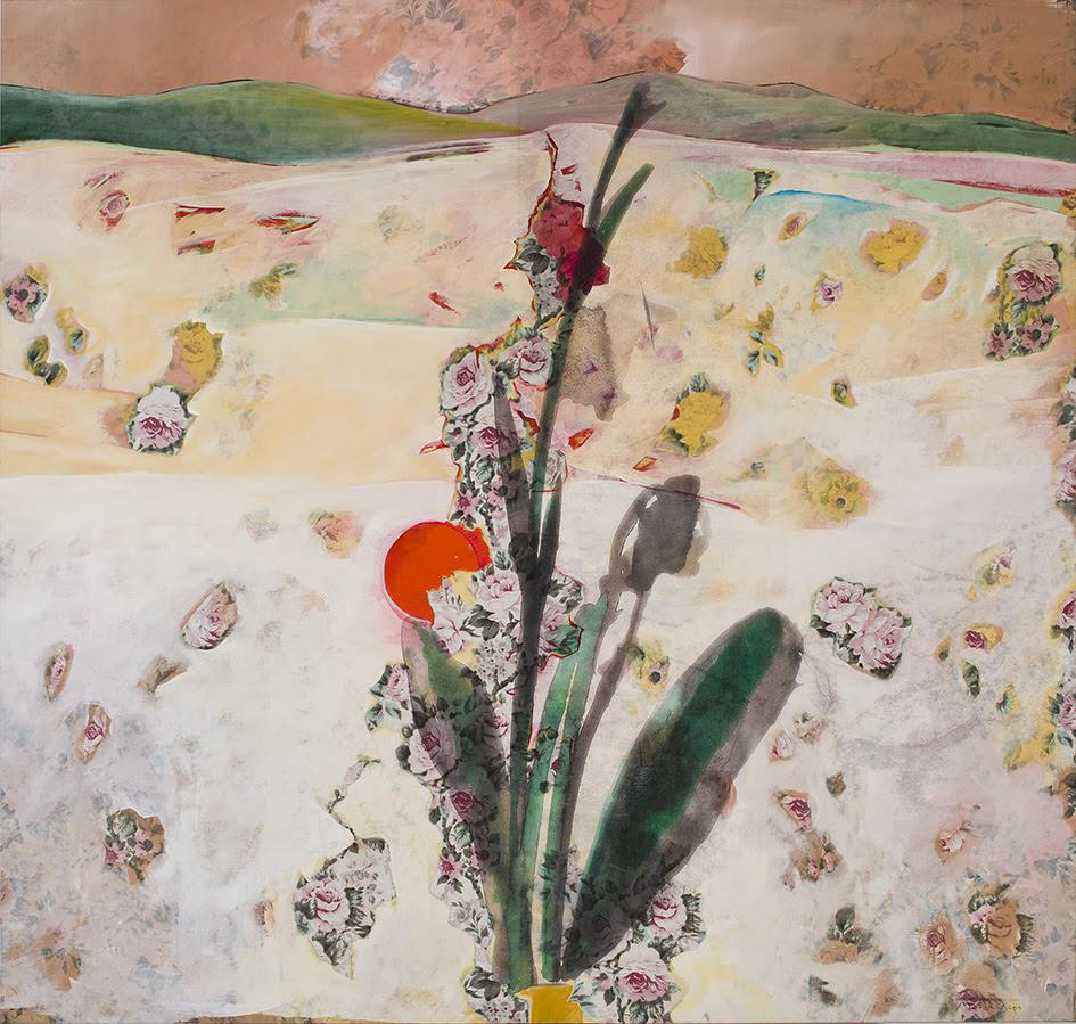Art Athina 2016
The Image Condition
26 – 29 May 2016
Booth: A6
CURATED BY
Yiannis Bolis
· Domna Gounari
PARTICIPANTS
Manolis Charos ·
Theofilos Katsipanos ·
Alexandros Maganiotis ·
Tassos Missouras ·
Natasha Poulantza
View Catalogue
THE IMAGE CONDITION In his anthropocentric, large scale creations, Theofilos Katsipanos transcribes scenes from everyday life into a context of bizarre, paradox and imaginary scenes. Human figures, in public and private moments, are presented compressed, distorted or oversized in relation to the cramped, claustrophobic interiors and the unspecified and otherworldly environments in which they operate. In his works, he initially uses acrylic paints and completes the canvas’ surface with oils in order to achieve the realistic details that interest him. Often his works give the impression of both a collage and a graffiti, fact that is reinforced by the usage of comic illustration elements and those of a caricature. The colour choices manifest the charged mental and emotional state of the characters and reflect the difficulty of interpersonal relationships and experiences. The surreal depiction of portraits brings the viewer face to face with facts and situations that mainly take place behind tightly closed doors, and invites him to a self-awareness process.
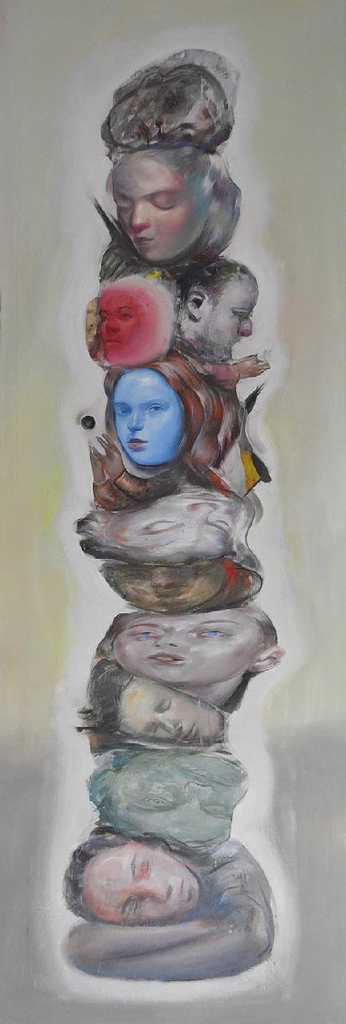
Theofilos Katsipanos,
Totem, oil on canvas,
180 x 60 cm, 2016
Alexandros Maganiotis creatively expresses his artistic pursuits through materials and technics of architectural design. He develops large scale wall compositions, applying colored, acrylic markers onto semi-transparent architectural film, and articulates the figures, the fonts, the phrases, the numerous and diverse objects with contours of dots and delicate gestures. In a rather genuine and personal style, his works reflect experimental practices of emblematic artists in European history of art who radically used to incorporate into the canvas’ surface words or entire texts achieving the visual potential of such symbiosis. Capitalism as Religion borrows the title of a text of Walter Benjamin which analyzes the main features of the capitalist system as a religious and ritual practice. One of the features, we detect it as a phrase in the drawing, describes capitalism as an unstoppable, relentless work worship celebration. The unexpected combination of different views of New York city and the social stratification that is reflected in three horizontal planes which run the drawing surface outline the temperament of a metropolis, a symbol of contemporary capitalist culture. This is the city that “never sleeps” since both work and consumption are imposed to such an exhaustive and non-stop level that joy and satisfaction turn into forced slavery.
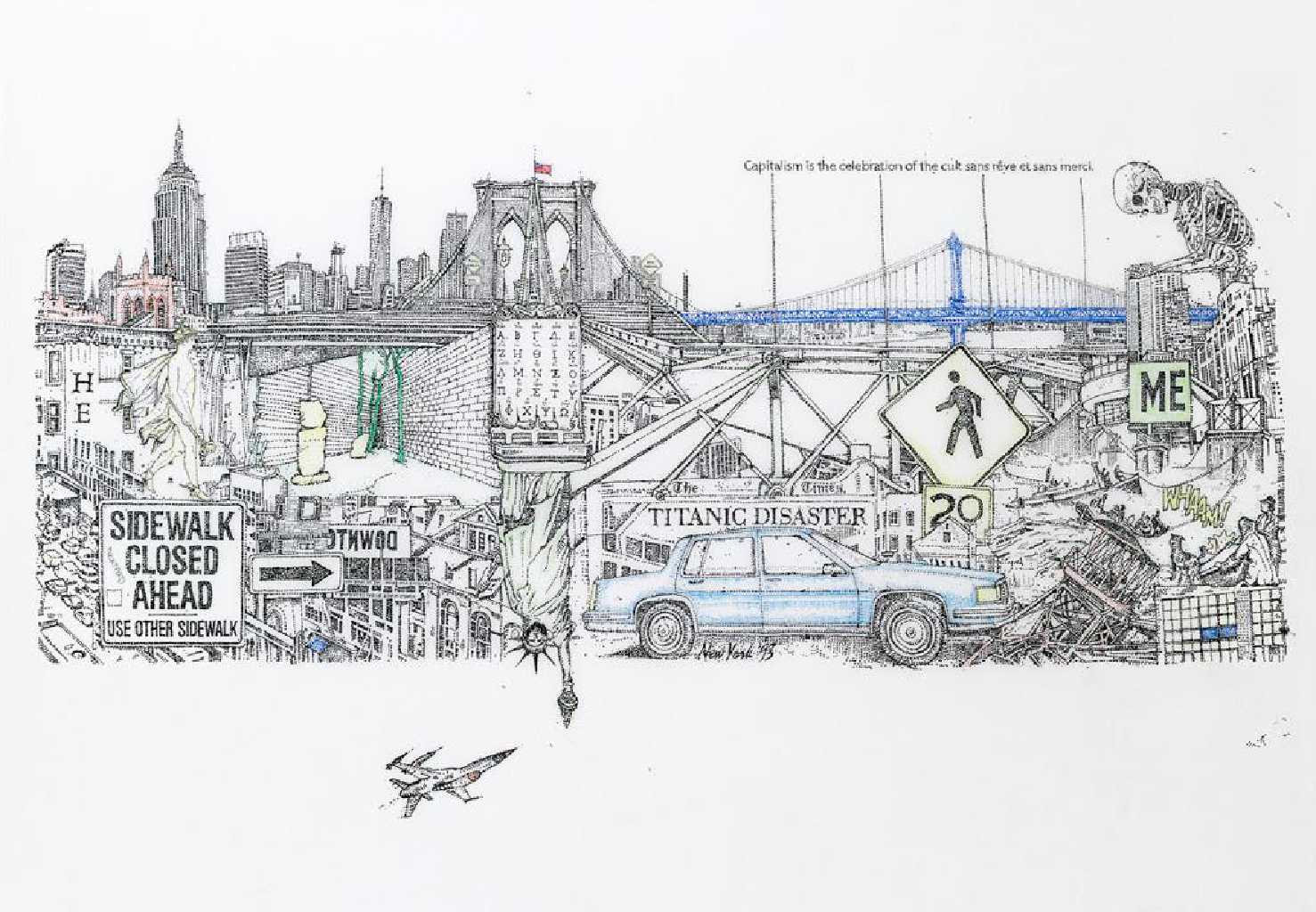
Alexandros Maganiotis,
Capitalism as a religion,
acrylics on transparent paper,
165 x 115 cm, 2016
Tassos Missouras’ compositions, balance between the need for narrative -an entirely personal narrative and a reality floating on the verge of fantasy and dream, the familiar and the unfamiliar, the explicit and the implicit, the nightmare and the complete alienation. His painting, being deeply human centred, opens itself to new illustrative capabilities, uniquely touching the limits of representation, it invokes a deeper communication through the intensity and the evocative power, the ambiguity and the symbolism of its themes. The forms are completely dominant and prevail as if they were spectral images in a distorting mirror, they draw stories up, confessing the divisions and the contradictions, the adventures and the inner drama, the melancholy and the trauma, the metaphysical agony and loneliness of human existence, in compositions where the paradox coexists with the enigmatic, the morbid with a creeping erotism, without however, the lack of humour, a lyrical mood and a romantic feeling.
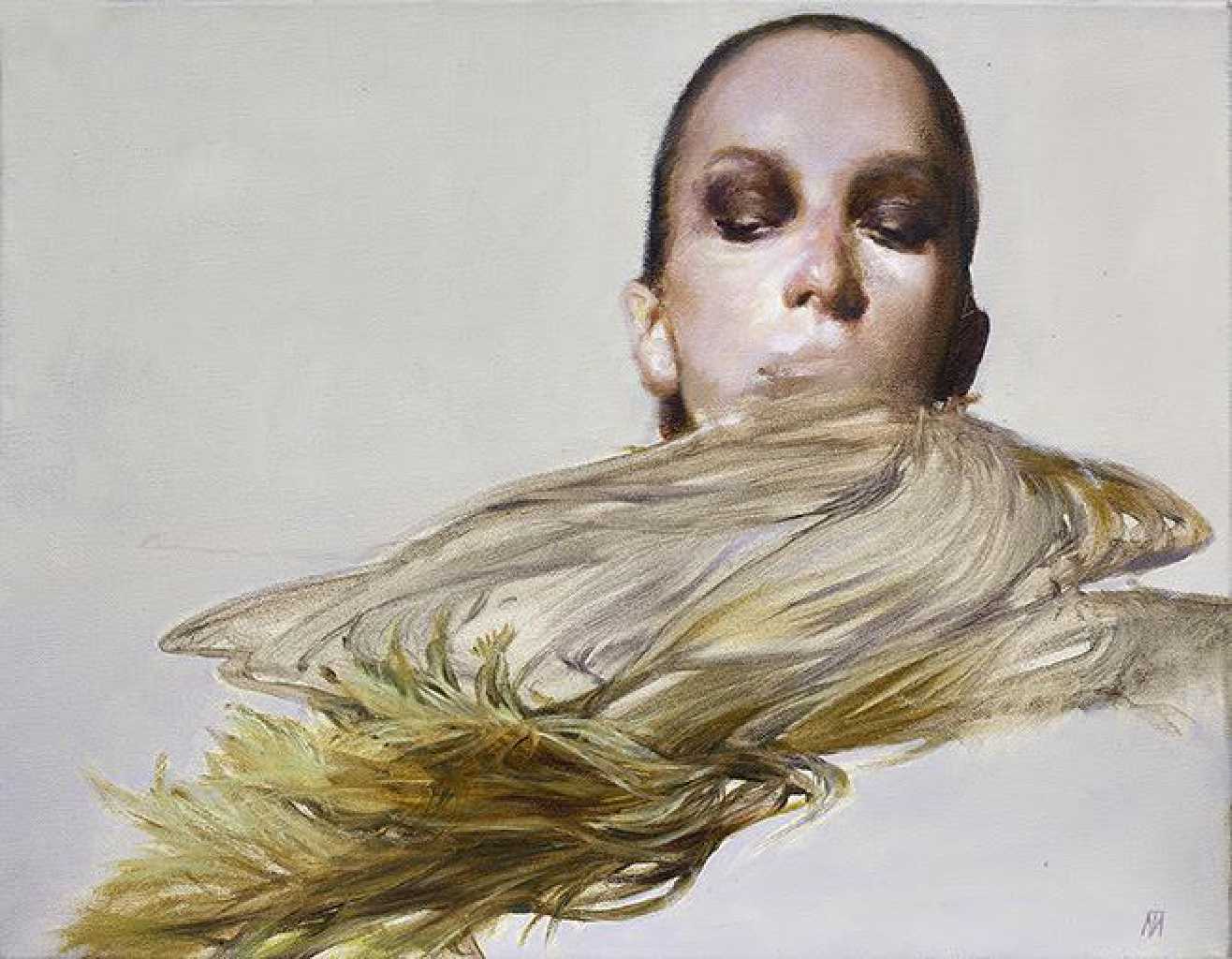
Tassos Missouras,
Untitled, oil on canvas,
30 x 40 cm, 2016
Natassa Poulantzas’ digital syntheses where the powerful idea coexists with the superior quality of its technical realisation and integration, validate the structured experimentation and the evolution of her quests, themes and of her wider intellectual concerns. Flowers constitute for the artist peculiar portraits, in correspondence with mental - emotional events and experiential situations, beyond the obvious, revealing an inner way for perceiving the world and the subjective interpretation of the human condition. Their original combination with famous works of art away from any narrative or conceptual intentions relying though primarily on the artist’s personal and aesthetic connotations explores critical issues related to knowledge, communication and memory function, to the value of the artwork in the age of technical reproducibility, to the reality and its digital version, suggesting a tour in a new world of images surrounded though by fluid and constantly reconfigurable limits.
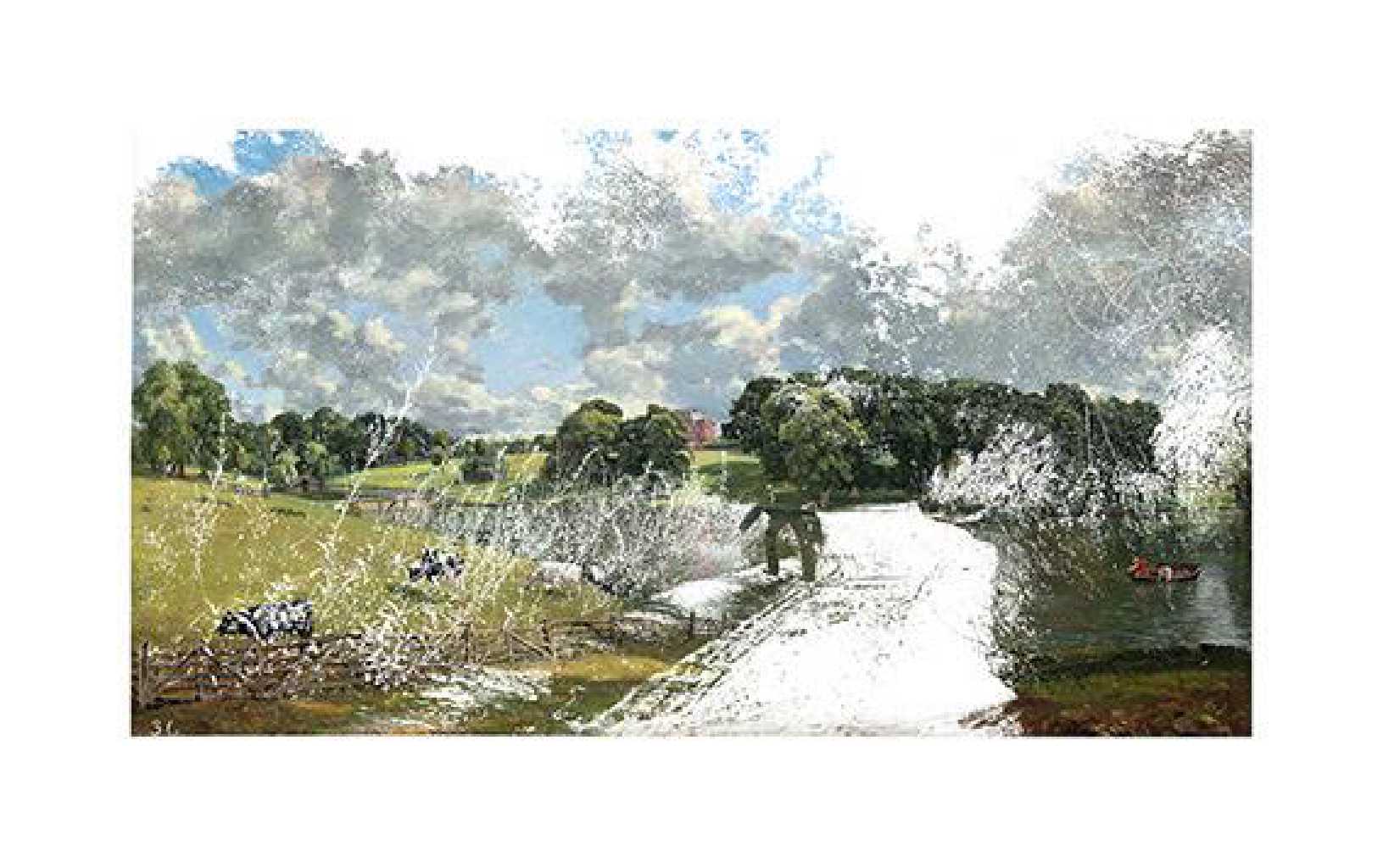
Natassa Poulantza,
John Constable Gathering Wild Flowers,
archival digital print on paper,
52 x 33 cm, 2016
Manolis Charos’ visual style emerges in sensitive and symbolic allusions, like the pages of a strictly personal, peculiar diary. A dreamlike, allusive and engaging world, reveals itself in works developed with rhythm, in works that offer excitement and visual delight, leading image beyond narration, communicating a direct, live and spontaneous sense. His compositions, the expressiveness of which is intensified by pure artistic values, reflect a particular mentality, an inner way of experiencing situations, give the impression that they emanate from the subconscious, illustrate his vital connection with the world, transform the stimuli and the memories in plastic episodes, which even though they deconstruct and refrain from visual reality, at the same they manage to contain and recompose it. The figurative element coexists with the abstract and the fragmentary, the atmosphere sometimes acquires a surprisingly metaphysical intensity, which is activated by the drawing qualities, the shine, the richness and the sensuality of colouring tones.
